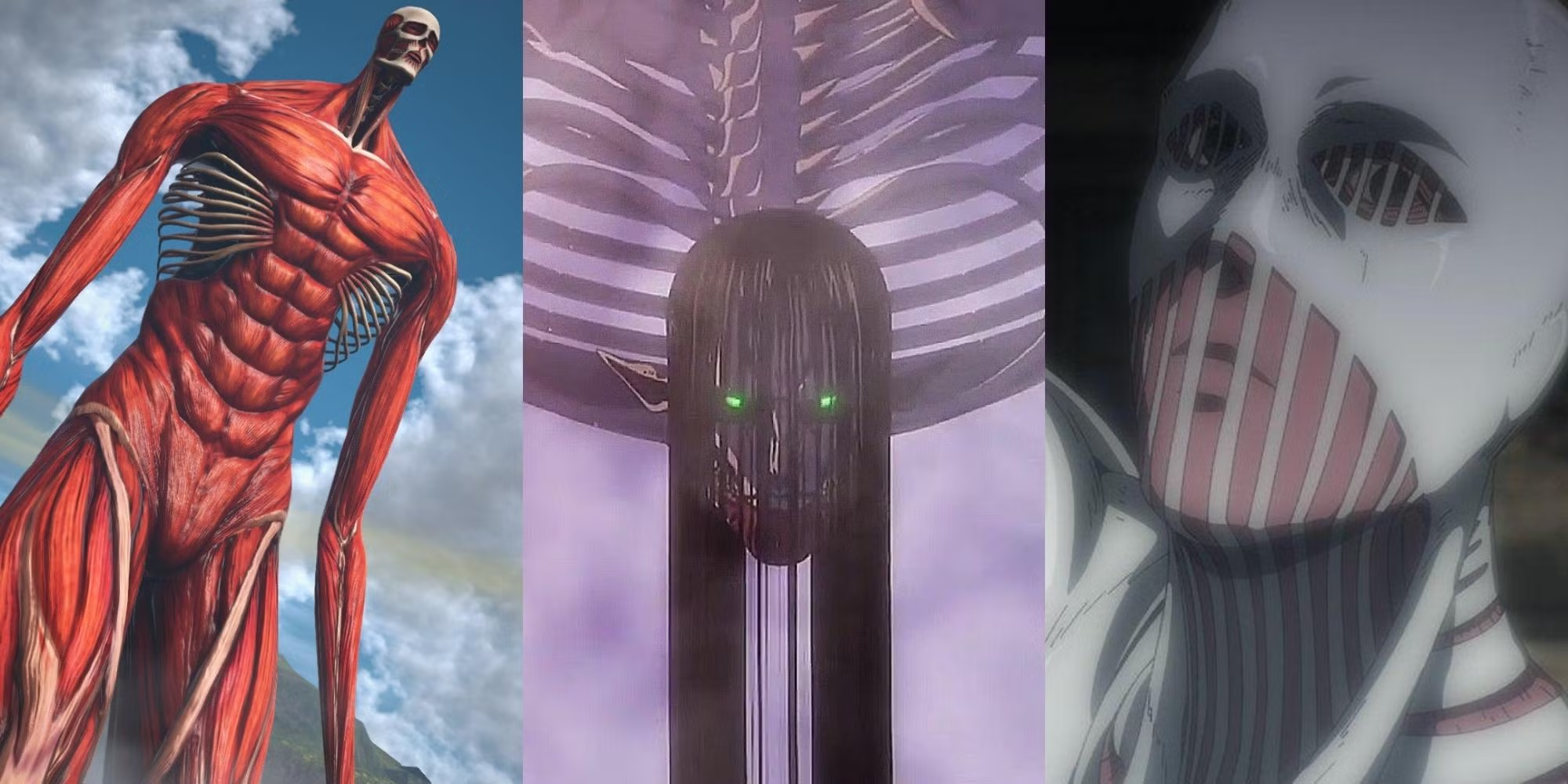The term "Huge Titan" evokes images of immense strength, towering figures, and powerful forces beyond human comprehension. From ancient mythology to m
The term “Huge Titan” evokes images of immense strength, towering figures, and powerful forces beyond human comprehension. From ancient mythology to modern pop culture, the idea of a “Titan” has always represented something grandiose and awe-inspiring. Whether you’re thinking about the mythological giants who shaped the world or the enormous celestial bodies in space, the concept of a “Huge Titan” captures our imagination and speaks to our fascination with scale, power, and endurance.
This article delves deep into the various interpretations and significances of Huge Titans across different contexts — mythology, nature, and culture — explaining why these colossal figures continue to captivate humanity.
The Mythological Origins of the Titans
The word “Titan” originates from Greek mythology, where the Titans were a race of powerful deities who ruled during the legendary Golden Age before being overthrown by the Olympian gods. These Titans were immense beings with vast strength and cosmic significance. Their story is a cornerstone of ancient Greek beliefs about the creation and structure of the universe.
Who Were the Titans?
In Greek mythology, the Titans were children of Uranus (Sky) and Gaia (Earth). They were twelve in number and included notable figures such as Cronus, Rhea, Oceanus, and Hyperion. The Titans were considered primordial gods, embodying natural forces like the sun, the ocean, and time. The most famous Titan, Cronus, was the leader who overthrew his father Uranus but was later defeated by his own son Zeus, marking the rise of the Olympian gods.
Symbolism of Titans in Myth
The Titans represent primal power and the raw forces of nature that predate civilization and order. Their battles with the Olympians symbolize the struggle between chaos and order, old versus new, and the eternal cycle of destruction and rebirth. The “Huge Titan” imagery here conveys the scale and magnitude of these divine beings — colossal figures whose power shaped the world.
Huge Titans in Nature: Giants of the Natural World
Outside mythology, the idea of a “Huge Titan” finds parallels in the natural world, where we encounter giants in various forms — from towering trees to massive animals and colossal geological structures.
Giant Trees: Titans of the Forest
One of the most awe-inspiring examples of nature’s “Huge Titans” is the giant sequoia tree, also called the Sierra redwood. These trees can grow over 300 feet tall and live for thousands of years, representing longevity, resilience, and the monumental scale of nature’s creations. The General Sherman Tree, a famous giant sequoia, is considered the largest living tree by volume on Earth.
Titans of the Animal Kingdom
Nature is also home to some huge animals that fit the “Huge Titan” label. The blue whale, the largest animal on Earth, can reach lengths of up to 100 feet and weigh over 200 tons. These gentle giants dominate the oceans, symbolizing the incredible diversity and scale of life on our planet.
Geological Titans: Mountains and Islands
Massive geological features such as the Himalayas or volcanic islands can also be seen as Titans of the Earth. The Himalayas, home to Mount Everest — the tallest peak on Earth — represent the sheer power of tectonic forces over millions of years. These natural “Titans” tower over the landscape and remind us of Earth’s dynamic and ever-changing nature.
Huge Titans in Modern Culture and Entertainment
The concept of Titans has been embraced and reinterpreted in modern pop culture, including literature, movies, and video games. Here, Titans are often depicted as colossal beings or machines that either threaten humanity or protect it.

Titans in Popular Fiction
One of the most famous modern uses of the “Titan” concept is in the Japanese manga and anime series Attack on Titan, where giant humanoid creatures known as Titans play a central role. These Titans, towering over humans, create a sense of terror and awe, symbolizing insurmountable challenges and the fight for survival.
Titans in Science Fiction and Fantasy
In many science fiction and fantasy stories, Titans are depicted as gigantic gods, warriors, or machines. They often embody themes of overwhelming power, ancient technology, or the struggle between good and evil. This continued fascination highlights humanity’s enduring interest in beings that transcend normal size and ability.
Titans in Video Games
In gaming, Titans often serve as epic boss enemies or powerful allies. Titles like God of War and Titanfall feature massive Titans that players can battle or control, giving a thrilling experience of commanding or confronting a force of incredible scale.
The Symbolic Meaning of Huge Titans
Beyond physical size, Titans symbolize concepts of strength, endurance, and the monumental forces that shape our world and psyche.
Strength and Power
Titans are often used metaphorically to describe people, organizations, or ideas of enormous influence. When someone is called a “Titan of industry” or a “Titan of sport,” it means they have achieved exceptional strength and dominance in their field.
Endurance and Longevity
Because Titans in nature and mythology often endure through vast spans of time, they also symbolize resilience and the ability to withstand adversity.
Awe and Fear
The sheer size and power of Titans evoke feelings of awe and sometimes fear, reminding us of the limits of human power and the mysteries of the universe.
The Future of the Titan Concept
As humanity advances in science and technology, the idea of Titans continues to evolve. From exploring colossal creatures in the deep ocean to imagining gigantic robots or space structures, the fascination with huge Titans remains alive.
Space Titans
With space exploration, new “Titans” emerge in the form of giant planets, moons, and even stars. For example, Titan, Saturn’s largest moon, is itself a kind of celestial “Titan” — large, mysterious, and a subject of intense study for its potential to harbor life.
Technological Titans
Advances in robotics and artificial intelligence open the possibility of creating gigantic machines or “Titans” that could transform industries, defense, or space travel. The idea of mechanical Titans, inspired by fiction, could become a reality.
Frequently Asked Questions (FAQs)
What is the origin of the word “Titan”?
The word “Titan” comes from Greek mythology, referring to a race of powerful primordial gods who ruled before the Olympian gods.
Are Titans real creatures?
Titans as described in mythology are not real. However, the term is often used to describe very large or powerful natural or artificial entities.
What is the biggest “Titan” in nature?
The biggest living “Titan” in nature is generally considered the blue whale, the largest animal on Earth. The largest tree by volume is the giant sequoia, specifically the General Sherman Tree.
How are Titans represented in popular culture?
Titans appear as enormous creatures or beings in movies, TV shows, anime, and video games, often symbolizing power, danger, or protection.
Why do Titans fascinate people?
Titans fascinate people because they represent strength, power, and the extraordinary. Their size and mythical background tap into human curiosity about forces beyond normal experience.
Is there a Titan in space?
Yes, Titan is the name of Saturn’s largest moon. It is notable for its thick atmosphere and potential for scientific discoveries about life and chemistry in the solar system.
Can “Titan” be used metaphorically?
Yes, “Titan” is often used metaphorically to describe people or entities with great strength, influence, or stature in a particular field.
The concept of the Huge Titan has transcended mythology to influence how we view nature, culture, and even technology. Whether through ancient stories or modern media, Titans symbolize our deepest awe for the colossal — a reminder of the immense powers that shape our world and beyond.
Must Visit: spotlightlive




COMMENTS